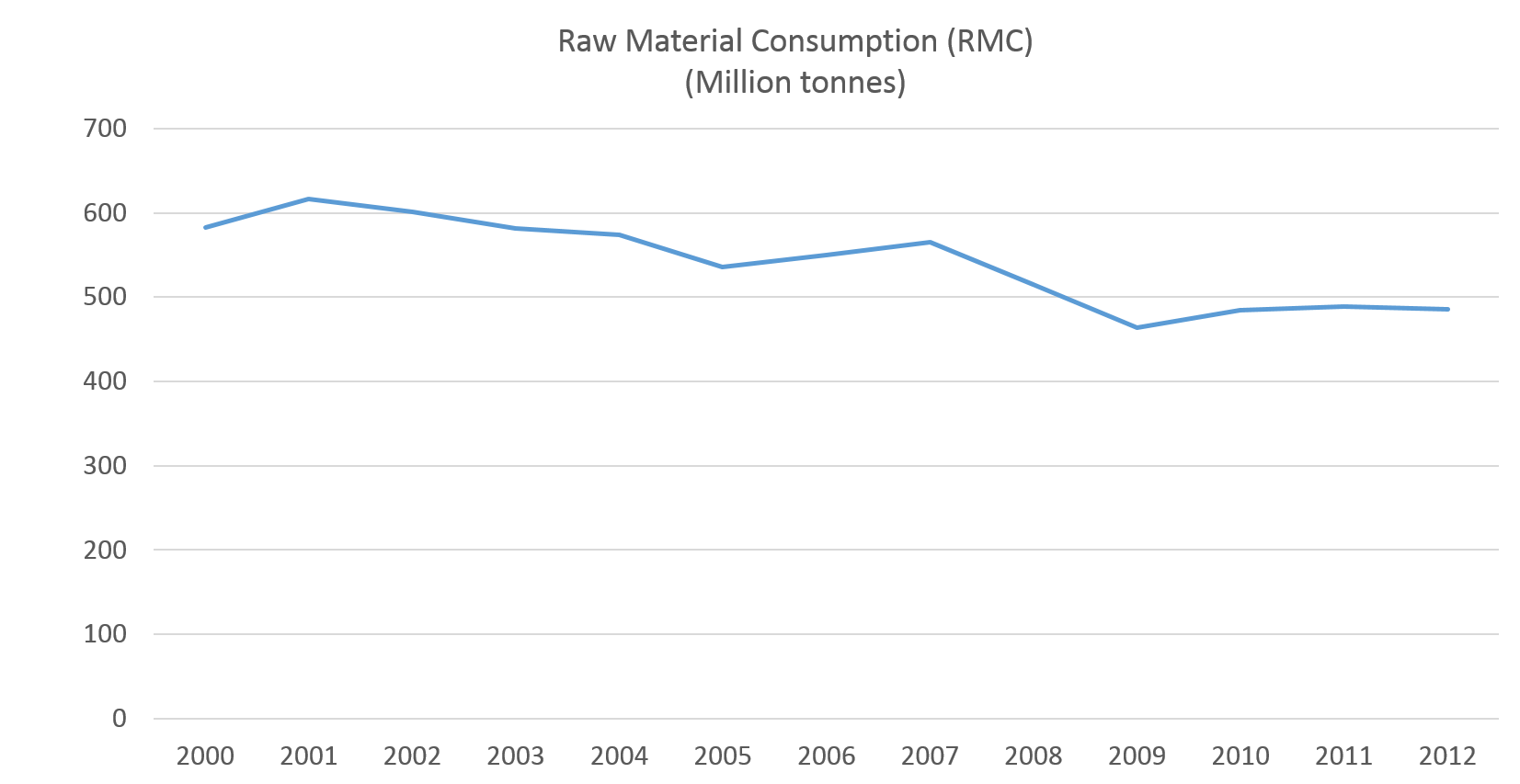'Peak Stuff' again
In late 2011 I wrote a paper which suggested that the UK’s consumption of material goods had peaked. I pointed to the evidence from a variety of different statistical sources that the weight of the things we use to sustain a modern economy was tending to fall. This included products such as fertiliser, water, steel, concrete and food. I saw this as very good news; increasing prosperity would not necessarily imply increasing use of natural resources. Recent data support the 'Peak Stuff' hypothesis and suggest that economic growth in advanced countries doesn’t increase the use of material extracted from the soil or earth’s crust. I think the ‘dematerialisation’ idea has real strength to it. At the time many people questioned the conclusions of the paper. They said that I hadn’t properly accounted for the UK’s imports of processed goods from overseas. This would depress the apparent UK use of materials. And the critics commented that I had chosen an unrepresentative sample of fifteen or so indices to make my point.
Others worried that the implication that economic growth might possibly be good for the environment was dangerous. George Monbiot wrote in the Guardian
‘I won’t deny it: my first reaction on seeing the results of Chris Goodall’s research into our use of resources was “I don’t want this to be true.” Obviously, I’d like to see our environmental impacts reduced, as swiftly and painlessly as possible. But if his hypothesis is right – that economic growth has been accompanied by a reduction in our consumption of stuff and might even have driven it – this would put me in the wrong. I’m among those who have argued that a decline in our use of resources requires less economic activity, or at least a transition to a steady-state economy.’
Three years on, how is the conclusion that advanced economies are on the brink of dematerialisation faring? Is Monbiot right or wrong? Broadly speaking, I think it is fair to say that new data strongly supports the hypothesis that material use is tending to fall as energy use stabilises or falls and material goods get lighter and (usually) more durable. In this note, I’ll focus on today’s Environmental Accounts for 2012 which show a new measure called Raw Material Consumption that tries to include the full resource use of goods imported into the UK.
The background
Advanced human societies requires just three things: biomass, minerals from the earth’s crust, and energy, usually from fossil fuels. If we can measure the weight of these things and compare it over time, we have a measure of the sustainability of the global economy. A population that is cutting its use of materials is better equipped to be durable.
History strongly suggests that the early stages of economic growth see very rapid increases in the use of natural materials. Iron ore and stone is extracted to make steel and concrete. Fossil fuel is mined to provide energy for manufacturing, transport and for comfort in the form of heat, light and cooling. But the ‘Peak Stuff’ hypothesis suggests that there is a limit. We now, for example, generally consume much less food per person than we did. Machines do almost all our labour and we need far less energy from our meals. (The UK eats far fewer calories per person than in the 1950s). And once we have built our roads and buildings, our need to for steel tends to fall. Stronger materials and rapid digitalisation of our societies are cutting the weight of things we buy. Downloads replace DVDs. Plastic replaces metal.
The Environmental Accounts for 2012
The UK tries to measure its resource use. It can compute with reasonable accuracy how much is extracted or harvested across the country. And it can estimate the weight of imports and exports. The Office for National Statistics (ONS) has provided a figure for what is called Domestic Material Consumption for over a decade. This number adds the weight of imports and deducts the weight of exports from the national extraction and harvesting of fuels, biomass and minerals. (The UK doesn’t really mine metal ores).
This is the pattern it has found.
The decline in material use had continued, even as the UK emerged from recession after 2010. The UK uses about 600 million tonnes of materials per year, or between 9 and 10 tonnes per person, a very low figure by European standards. This includes fossil fuels.
What is more difficult is working out the weight of resources that went into imports. Take a tonne of steel for example. To make the metal, a much larger volume of ore needs to be mined and a large amount of coal is needed to melt the iron out of that ore. Fossil fuels are also needed to transport the finished goods to the port and then on the ship to the UK.
This year ONS has published what it calls an experimental statistical series, estimating how much material weight goes into the finished imports (such as meat, iPhones and steel girders). Raw Material Consumption excludes fossil fuels so the numbers are actually lower than Domestic Material Consumption. But the trend is the same.
Raw Material Consumption peaked in the early part of the last decade at over 600 million tonnes and then fell, including a very sharp fall of 100 million tonnes between 2007 and 2009. The beginnings of economic recovery saw a small increase to 2011 but 2012 saw a slight fall, even as growth began to pick up.
Energy use went up slightly in 2012, largely as a result of a cold winter. However, the long run trend in consumption of fossil fuels is also strongly downward.

